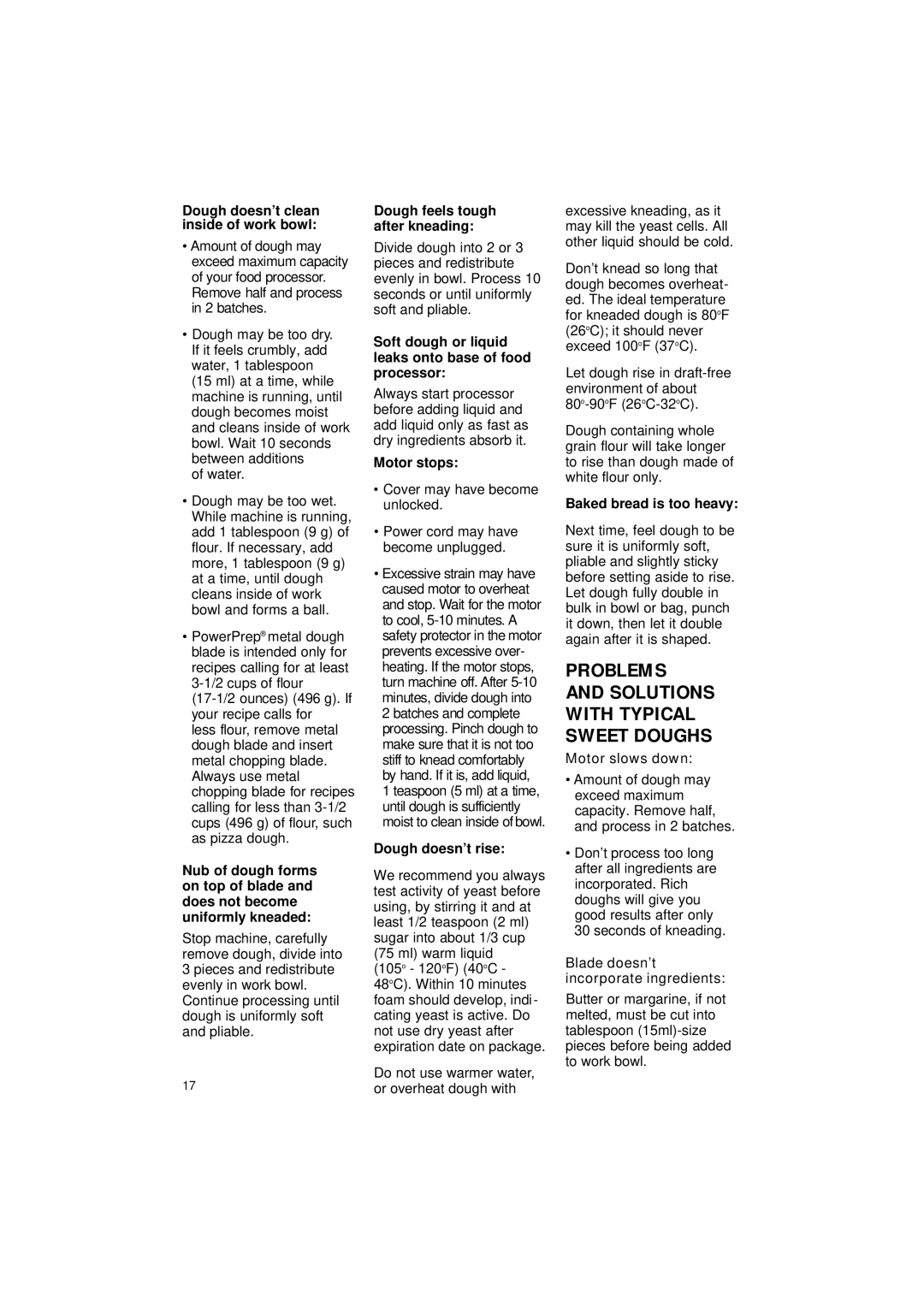DLC-2011C specifications
The Cuisinart DLC-2011C is a premium food processor that has earned its reputation for versatility and performance in the kitchen. Designed to simplify food preparation, this powerful appliance comes equipped with a robust motor and a range of features that make it an essential tool for both novice cooks and experienced chefs.One of the standout characteristics of the DLC-2011C is its 11-cup capacity bowl, allowing for large batches of food to be processed at once. Whether you’re chopping, slicing, or pureeing, the spacious bowl provides ample room. The bowl is constructed from durable BPA-free plastic, ensuring longevity while maintaining food safety standards.
This food processor comes with multiple stainless steel blades and discs, which are engineered to deliver precision and efficiency. The stainless steel chopping/mixing blade is ideal for a variety of tasks, from mixing dough to grinding meats, while the slicing disc allows users to create uniform slices of fruits and vegetables. The reversible shredding disc also contributes to versatility, giving the ability to shred cheese, carrots, and more with ease.
Incorporating Cuisinart's patented technology, the DLC-2011C features a bowl and lid design that ensures a tight seal, minimizing spills and messes. The safety-locking system prevents the processor from operating unless the bowl and lid are securely in place, ensuring safe use at all times.
Control is a key aspect of the Cuisinart DLC-2011C. With a simple yet effective interface, users can easily switch between on, off, and pulse functions. The pulse feature enables short bursts of processing, providing greater control over food consistency, especially for delicate tasks like chopping herbs or nuts.
Maintenance and cleaning are also user-friendly, as the removable parts are dishwasher-safe, making cleanup hassle-free after preparing meals.
In summary, the Cuisinart DLC-2011C stands out in the realm of food processors due to its well-designed features, efficient technology, and practical characteristics. It not only saves time in food preparation but also enhances the overall cooking experience, making it a valuable addition to any kitchen. With its robust performance and high-quality construction, it promises reliability that meets the demands of today’s culinary enthusiasts.
